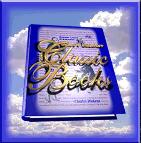World's Greatest Classic Books Feature:
Miguel de Cervantes Saavedra
Featured works:
All
Books Written By
Miguel de Cervantes Saavedra
BOOK LINKS
abebooks.co.uk.
A&E Shop
All-Ink.com
AlphaCraze.com
Amazon.ca
Amazon.com
Amazon.co.uk
BookCloseOuts.com
Booksamillion.com
Chapters.ca
eCampus.com
MUSIC LINKS
Music123
OldGlory.com
PlayCentric
PosterNow
PushPosters
Tower Records
SEARCH THE WEB
looksmart.co.uk
People-Finder.com
Search. Get Paid. Be Smart.
Died: April 23, 1616, in Madrid, Spain
Miguel de Cervantes was born the fourth son to Leonor de Cortinas and Rodrigo de Cervantes. The latter was a deaf surgeon, with a large family to support, and limited means to do so. Cervantes' first poems in appreciation of Spain's Queen Elizabeth of Valois in 1568 were published while he was still a student. However he left off writing while struggling to make a living as a chamberlain to Cardinal Giulio Acquaviva, whom he accompanied to Italy. In Naples, he joined the Spanish regiment for the 1570 naval battle against the Turks in Lepanto. Cervantes was shot twice to the chest and one in the hand while on board the ship La Marquesa. While he recovered enough to see further battle, he lost the use of his left hand.
Cervantes was captured by pirates in 1575 and taken to Algeria as a slave where after several unsuccessful escape attempts he was ransomed by Trinitarian friar Juan Gil in 1580. At age thirty-three he returned to Spain but was unable to find the usual employment for distinguished veterans. He began writing and produced a considerable amount of verse and plays as well as a novel, La Galatea, by 1585. During this time he also married, but was unhappy with, Dona Catalina de Palacois. Despite the amount of writing he was able to accomplish, he was unable to make a sufficient living from the sales of his work, and began to take government jobs, such as tax collector. He was subsequently imprisoned at least twice for controversial collection methods.
It was while in prison, however that Cervantes first conceived of the allegorical story of the adventures of Don Quixote, an idealistic gentleman obsessed with chivalrous deeds, and his realistic companion Sancho Panza. In 1605, the year when the first part of the story, The History of the Valorous and Wittie Knight-Errant Quixote of the Mancha, was published, Cervantes was living in poverty with his sisters, his niece and his illegitimate daughter Isabel Saavedra in Valladolid. Unfortunately while the story and its subsequent second part were immensely popular at the times of their publication and ever since, Cervantes did not ever profit significantly from the text, partly from poor management.
Don Quixote is deemed by many to be the first modern novel, holding a position of significant influence on ensuing prose fiction. Its enduring themes have since inspired, and have been represented in, operas, poems, films, a ballet and a modern day American musical ( Man of La Mancha ), as well as in the artwork of Honore Daumier and Gustave Dore. In print it has appeared in all modern languages, in over 700 editions.
In 1613 Cervantes published Novelas Ejemplares, a collection of short stories, followed by the second part of Don Quixote in 1615. His last work, Persiles y Sigismunda, another allegorical novel in whose prologue he foreshadows his own death, was finished just four days before he died in Madrid.

Don Quixote
The story of Alonso Quixano, a country
gentleman, whose crazed mind leads him to change his name to Don Quixote de la Mancha and
to go forth to right the world’s wrongs. This novel, a satire of romantic chivalry,
provides a window on 17th century Spain.

Eight Interludes
These Interludes, played between the acts
of full-length plays, offer keyhole glimpses of a world far removed from courtly elegance
or military heroism, populated by characters cut from the underside of seventeenth century
Madrid, that Babylon of opportunists and deceivers. Cervantes has created brilliant
vignettes in which a remarkable likeness of Don Quixote can be seen.

Exemplary Stories
More popular in their day than Don
Quixote, Cervantes's Exemplary Stories (1613) surprise, challenge and delight.
